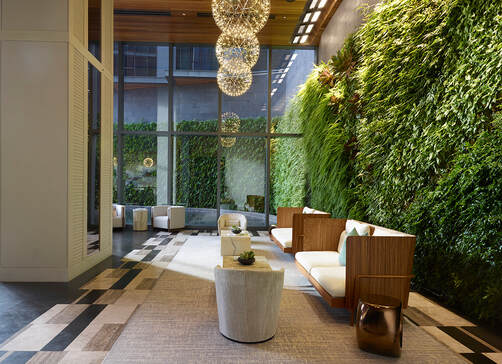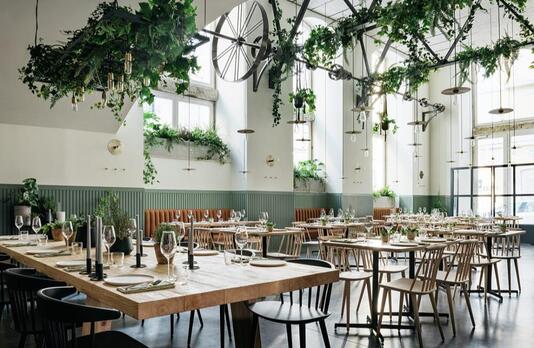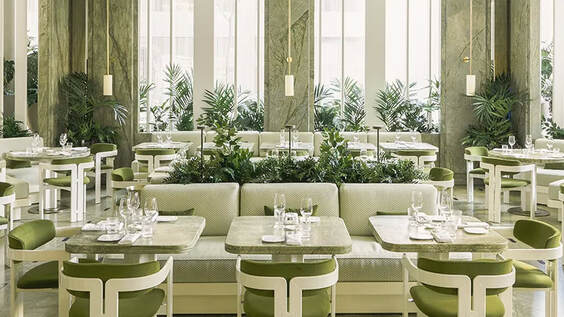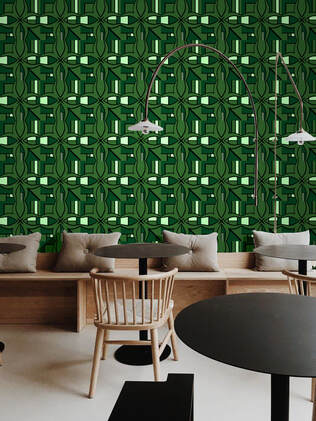|
As an interior designer, I have seen the growing trend of biophilic design in the hospitality industry. This design approach integrates nature into the built environment and has been shown to have positive effects on the wellbeing of guests and staff. In this blog post, I will explore what biophilic design is, its benefits, and tips for implementing it in your hospitality interiors. What Is Biophilic Design?Biophilic design is a design approach that seeks to bring elements of nature into the built environment. It comes from the word Biophilia – meaning Love of Nature. This can be achieved through the use of natural materials, patterns, and colours, and the incorporation of natural light and outdoor spaces. Biophilic design focuses on creating a calming space with a visual connection with nature, and is based on the idea that humans have an innate connection to nature and that this connection is essential to our wellbeing, health, and productivity. Studies have shown that biophilic design can have a range of benefits, including reduced stress and increased productivity. In the hospitality industry, this means that guests are more likely to have a relaxing and rejuvenating experience, while staff are more likely to feel satisfied and motivated in their work environment. Biophilic Design In The Hospitality IndustryThe use of biophilic design in the hospitality industry is on the rise, and for good reason. Hotels and resorts are incorporating biophilic design elements into their interiors to create a more calming and rejuvenating environment for guests. This can be seen in the use of natural materials, such as wood, and the incorporation of indoor plants and water features. Outdoor spaces, such as terraces and balconies, are also being designed to connect guests with nature. Biophilic design can also improve staff wellbeing in the hospitality industry. By creating a more natural and relaxing environment, staff are more likely to feel satisfied and motivated in their work environment. This can have a positive impact on guest experience, as staff are better able to provide high quality service. Incorporating biophilic design into hospitality interiors can also have financial benefits. A well designed biophilic environment can attract more guests, as well as increase the length of their stay and the amount they spend. It can also help to reduce operating costs, as natural light and indoor plants can help reduce the need for using more of artificial lighting and air conditioning. Tips For Implementing Biophilic Design In Hospitality InteriorsAs an interior designer, I have seen the positive impact of biophilic design in the hospitality industry, and I believe that this design approach should be considered as standard in all hospitality projects. Here are just a few tips for implementing biophilic design in hospitality interiors:
Biophilic design is an important design component in the hospitality industry, and its benefits are clear. By incorporating elements of nature into the built environment, guests and staff can experience stress free and calming spaces to help increase wellbeing. As an interior designer, I believe that biophilic design should be considered in all hospitality projects, and use biophilc design myself as part of the Neuro Design principles used as part of my overall design approach. I hope that this blog post has inspired you to consider the biophilic design approach in your next hospitality interior project. For more in depth further reading check out this blog: ”The Science Behind Neuro Design: How Interiors Can Impact Your Brain.” Interior design, wallpaper, and rug blog LiverpoolWe Bring Hospitality Interiors To Life! We're a Liverpool based interior design studio who specialise in the design of hospitality interiors. We can provide our interior design service throughout the UK. We also design 'Simple | Bold | Graphical | Timeless' products in the form of commercial quality wallpaper and handmade rugs. Our enriching & healthy wallpapers and rugs can be shipped worldwide and used in ANY kind of interior. All contents of this website belong to Luke Edwards. Copyright © Luke Edwards. All Rights Reserved. Comments are closed.
|




